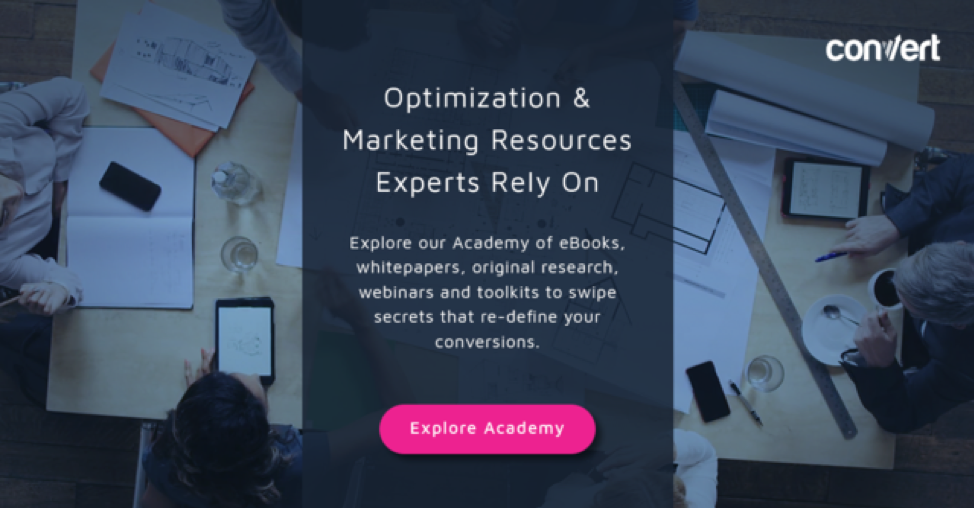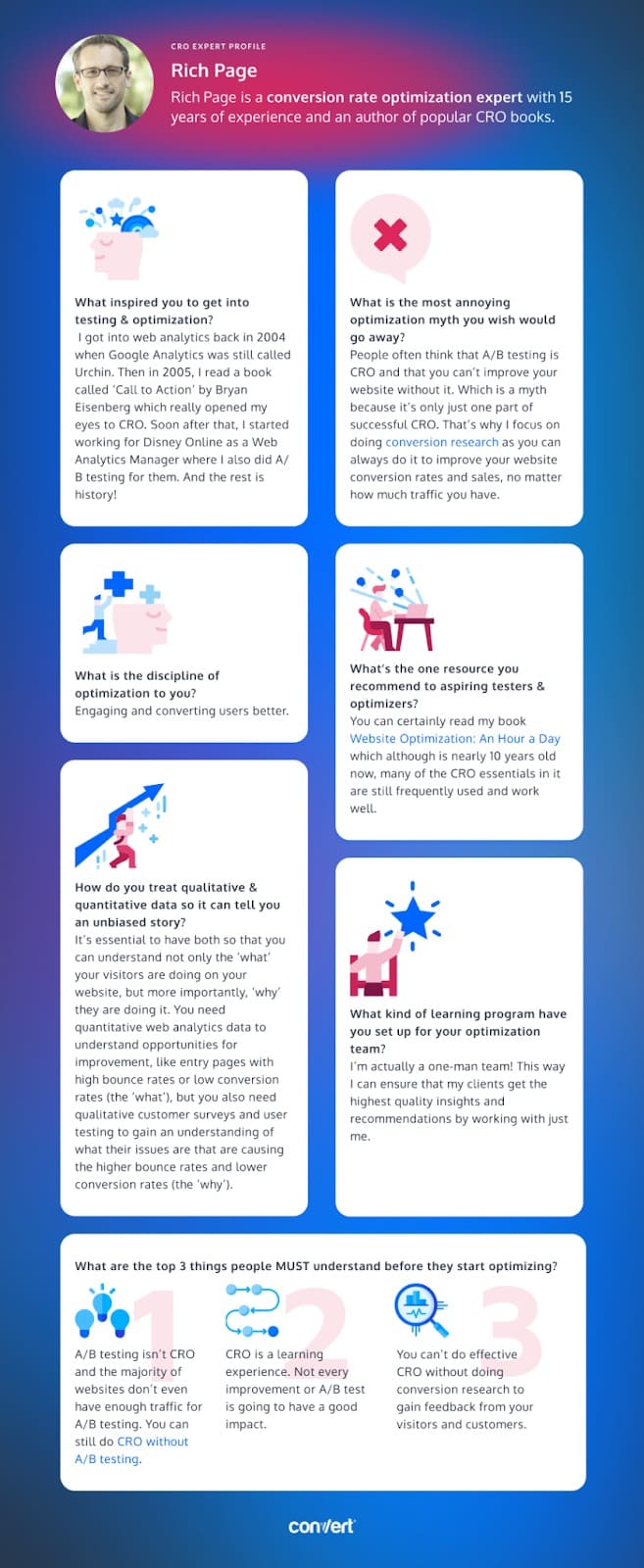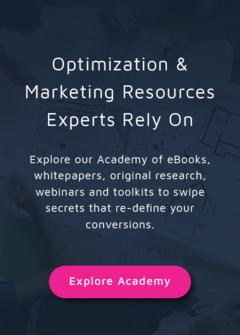Testing Mind Map Series: How to Think Like a CRO Pro (Part 10)
Interview with Rich Page
There’s more to CRO than just A/B testing.
And while there are certain best practices in CRO, it’s important to understand your visitors and their experiences. Only then can you truly improve your website. In particular, gaining conversion research from your visitors forms a goldmine of high-impact website improvement ideas, and is something that our latest CRO pro focuses on in particular.
In this interview, we talked with Rich Page about things people get stuck on when it comes to CRO and what you need to know to make it in the industry.
Let’s dive in…
Rich, tell us about yourself. What inspired you to get into testing & optimization?
That was so long ago now! I got into web analytics back in 2004 when Google Analytics was called Urchin, as I was passionate about understanding the performance of websites and making them better. I wanted to take that further and actually improve websites based on the insights I would gather from web analytics. I also did a thesis on web usability for my master’s.
Then in 2005, I read a book called ‘Call to Action’ by Bryan Eisenberg which really opened my eyes to CRO and the huge potential it has. Little did I think that one day I would also write a book on CRO, Website Optimization: An Hour a Day!
Soon after that, I started working for Disney Online as a Web Analytics Manager where I also did A/B testing for them. And the rest is history!
How many years have you been optimizing for? What’s the one resource you recommend to aspiring testers & optimizers?
I have been doing CRO for 16 years now, so I have been doing this for one of the longest of anyone in the industry. In that time I’ve optimized hundreds of websites!
You can certainly read my book Website Optimization: An Hour a Day which although is nearly 10 years old now, many of the CRO essentials in it are still frequently used and work well.
For an even more up-to-date and detailed resource on CRO, I highly recommend the CRO courses at CXL.com. They are excellent and very in-depth and include certification.
Answer in 5 words or less: What is the discipline of optimization to you?
Tough one! I would have to say ‘Engaging and converting users better’.
What are the top 3 things people MUST understand before they start optimizing?
First of all, businesses need to understand that A/B testing isn’t CRO and the majority of websites don’t even have enough traffic for A/B testing, but more importantly that you can still do CRO without A/B testing, as I detail in this guide.
Second, that CRO is a learning experience. Not every improvement or A/B test is going to have a good impact. Far from it – many will fail to have a good impact. The key is to continually learn from reasons why things may not have worked well, and keep iterating and optimizing further. CRO is not a project, it’s a continual process of evolving and improving your online business.
And most importantly, you can’t do effective CRO without doing conversion research to gain feedback from your visitors and customers. The insights from user testing, visitor and customer surveys, live chat analysis, and session recordings form a goldmine of high-impact website improvement ideas and give much better results than just guessing or listening to what your HiPPO wants to improve on your website.
How do you treat qualitative & quantitative data so it can tell you an unbiased story?
It’s essential to have both so that you can understand not only the ‘what’ your visitors are doing on your website, but more importantly, ‘why’ they are doing it.
You need quantitative web analytics data to understand opportunities for improvement, like entry pages with high bounce rates or low conversion rates (the ‘what’), but you also need qualitative customer surveys and user testing to gain an understanding of what their issues are that are causing the higher bounce rates and lower conversion rates (the ‘why’).
Even A/B test results are only quantitative and don’t tell you ‘why’ a version won or lost. That is why it’s so essential to gather user feedback on new website launches or A/B test winners to discover the ‘why’ and what needs improving further. That is why I particularly like using tools like Usabilityhub.com to ask the target audience what they like most and least about your proposed improvements or A/B test variations. This helps ensure higher impact website improvements with a greater impact on conversion rate and sales.
What kind of learning program have you set up for your optimization team? And why did you take this specific approach?
I’m actually a one-man team! This way I can ensure that my clients get the highest quality insights and recommendations by working with just me. They find this one of the best reasons to use my services, as they have told me that with other agencies, sometimes they can end up working with a rookie or an outsourced team, and don’t get the results they expected.
What is the most annoying optimization myth you wish would go away?
Good question! I think many people are turned off from doing CRO when they realize they don’t have enough traffic to do A/B testing (which unfortunately is the majority of websites).
They often think that A/B testing is CRO and that you can’t improve your website without it. Which is a myth and completely wrong because it’s only just one part of successful CRO. That’s why I focus on doing conversion research for my clients as you can always do it to improve your website conversion rates and sales, no matter how much traffic you have.
Download the infographic above to use when inspiration becomes hard to find!
Hopefully, our interview with Rich will help guide your conversion rate optimization strategy in the right direction! What advice resonated most with you?
Be sure to stay tuned for our next interview with a CRO expert who takes us through even more advanced strategies! And if you haven’t already, check out our interviews with Gursimran Gujral of OptiPhoenix, Haley Carpenter, Rishi Rawat of Frictionless Commerce, Sina Fak of ConversionAdvocates, Eden Bidani of Green Light Copy, Jakub Linowski of GoodUI, Shiva Manjunath of Speero, and our latest with Andra Baragan of Ontrack Digital.

Written By
Rich Page

Edited By
Carmen Apostu


